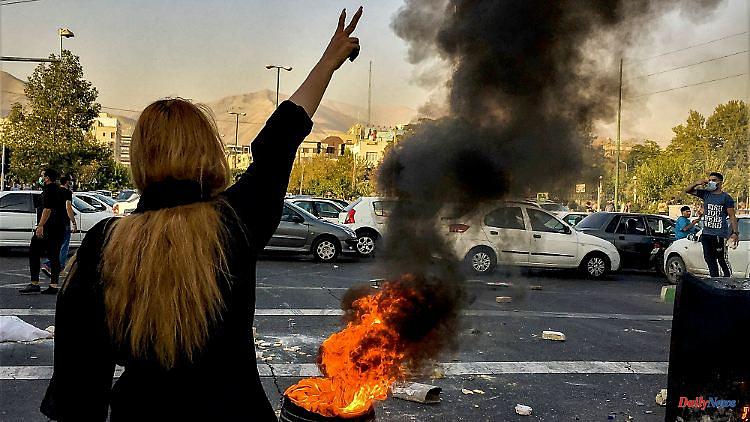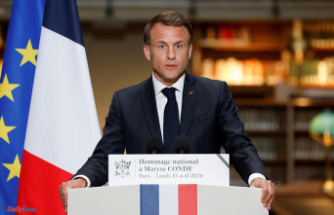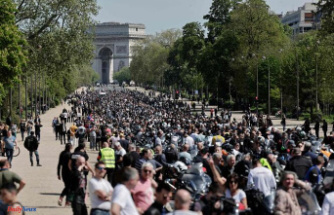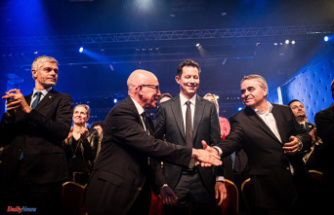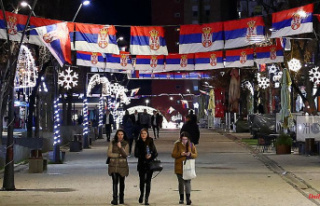The mullahs' regime has been oppressing women in Iran for decades. But in 2022 they will fight back. What began with a headscarf became the country's largest feminist revolution. And it's not over yet.
When the Iranian Nobel Peace Prize winner Shirin Ebadi opened the daily newspaper more than four decades ago, she stared at the draft Islamic penal code. At that moment it dawned on the lawyer that her life and that of all women in Iran would change in one fell swoop. "The horrible laws I was to fight against for the rest of my life stared back at me from paper," Ebadi describes February 11, 1979 in her book Mein Iran.
In it she lists what the laws contained. A woman's life should only be worth half of a man's life. Therefore, when a woman dies in a car accident, her family receives only half the monetary compensation that would have been paid if the victim had been a man. Even in court, the testimony of two women is only worth as much as that of one man. Women in Iran, according to the law, needed their husbands' permission to get a divorce, while men have four wives and could leave them at any time. "In short, the laws turned the clock back 1,400 years to the early days of Islam's spread," writes Ebadi.
Like Ebadi, millions of women woke up overnight in an antiquated world after the Iranian revolution. At the time, no one believed that things could get any worse after the Shah monarchy. But what the revolutionaries fought for - free elections and justice - never materialized. Instead, the country quickly learned that they had put their trust in the wrong person with revolutionary leader Ruhollah Khomeini. In the book, Ebadi writes that that day she looked at her husband and knew that from now on she would be an object and not a person.
What followed was the Islamist-influenced rule of the mullah regime: compulsory veiling of women, oppression, violence against their own people. That didn't change after Khomeini's death in 1989. Since then, Ayatollah Ali Khamenei has ruled with the same conservative severity to this day. When he came to power, most of the young Iranians who are leading the revolution against the regime today were not even born. She only knows pictures of women in short skirts and with loose hair sitting on a university campus in Tehran in 1970 from photos.
There have been repeated protests against the mullahs' dictatorship in Iran. But never before on this scale. The death of 22-year-old Kurd Mahsa Jîna Amini overnight on September 16 changed everything. The young woman became a symbol of a feminist liberation struggle after she was killed by the Iranian vice squad. She was arrested because her headscarf didn't fit properly. In solidarity with her and in protest against the oppression, more and more women in Iran took to the streets without a headscarf and publicly cut their hair - an expression of deep sadness.
"Women are leading this revolution," says human rights activist Düzen Tekkal ntv.de. "They show us what feminism means." The courage of women to stand up for their rights through life and death impresses millions of people around the world. The slogan of this revolution is "Jin, Jiyan, Azadî!" It's Kurdish and means "women, life, freedom". The slogan can be heard on every street where people show solidarity with the Iranian citizens. "It's much more than just the headscarf. It's the Islamic penal code that took women's lives away," says Tekkal.
In the past 43 years there have been repeated uprisings, which have always been violently suppressed by the regime. But this time it is different. "People don't go home anymore," Tekkal said in an interview with ntv.de in early October. "When Amini was killed, a minority within a minority was killed: a Sunni, a Kurd, a woman. And the whole of Iran says: 'We are Jîna Mahsa Amini.'" On December 25, her death was 100 days. Since then, men, women and children have taken to the streets, despite the massive use of force by the police against the demonstrators.
According to estimates, more than 550 people have been killed since the protests began on September 16, most of them young people and children. Civil war-like scenes are taking place in the Kurdish areas in the north-west of the country. In mid-November, security forces marched into the Kurdish city of Mahabad with tanks and shot at demonstrators indiscriminately. Despite the restricted internet in Iran, new videos are appearing on social networks every day, documenting the Iranian police's barbaric outbreaks of violence against their own people. According to human rights activists, at least 18,000 demonstrators have already been arrested.
Solidarity with the protests also reached the men's soccer World Cup in Qatar. In the opening game against England on November 21, the Iranians remained silent over their national anthem. As a consequence of the players' open support, the Iranian Revolutionary Guard threatened the national team with "violence and torture" against their families if they did not sing the national anthem. Numerous other cases prove that the regime does not stop at famous athletes, artists and actors. Anyone who joins the revolution will be punished.
On December 8, the regime shocked the world with the execution of 23-year-old rap musician Mohsen Shekari. It was the first execution linked to the demonstrations in Iran. A few days later, Majidreza Rahnavard, also 23, was publicly hanged in the city of Mashhad in the northeast of the country. Both were accused of "waging war against God". In Rahnavard's case, it was reported that only 26 days elapsed between his arrest and his killing. He didn't have legal counsel.
The killing of the two young men caused horror at home and abroad. But they probably won't be the only ones. At least 23 other demonstrators have been sentenced to death by the Iranian judiciary, and the number is growing every day. Federal Foreign Minister Annalena Baerbock describes the executions as an attempt at intimidation. "The weaker the regime is, the more violent they are against the demonstrators," human rights activist Ebadi told the Süddeutsche Zeitung.
Because of the serious human rights violations, the EU has imposed sanctions on those responsible in the country, affecting around 20 people and one organization. Sanctions against Iran for supporting Russia's war against Ukraine have already been approved. For many Iranian women in exile, this is an important first step. But it is not enough to provide concrete help to the people there.
It is not only men who are killed by police in executions or live ammunition. On December 18, the "New York Times" reported on a 14-year-old woman who was so severely raped in prison that she died as a result. She had taken off her headscarf at school, was identified with cameras and arrested. Her mother, who wanted to publicize the case, has since disappeared.
Despite these atrocities, human rights activist Düzen Tekkal believes and hopes the protests will continue. "The demonstrators will not stop and are willing to make sacrifices and die. Because what they are fighting for is bigger than themselves." But for how long that also depends on Europe and the liberal West. "What the people in Iran want is that we look and that we act. They want us to see the regime for what it is - an unjust regime."
What Iran's history shows is that women's rights that have been fought for over years are no guarantee of eternal freedom. Laws can change and women can never be sure of their rights - not even in the West. For the Iranians there can only be one solution next year: the end of the mullahs' regime after almost 44 years.

